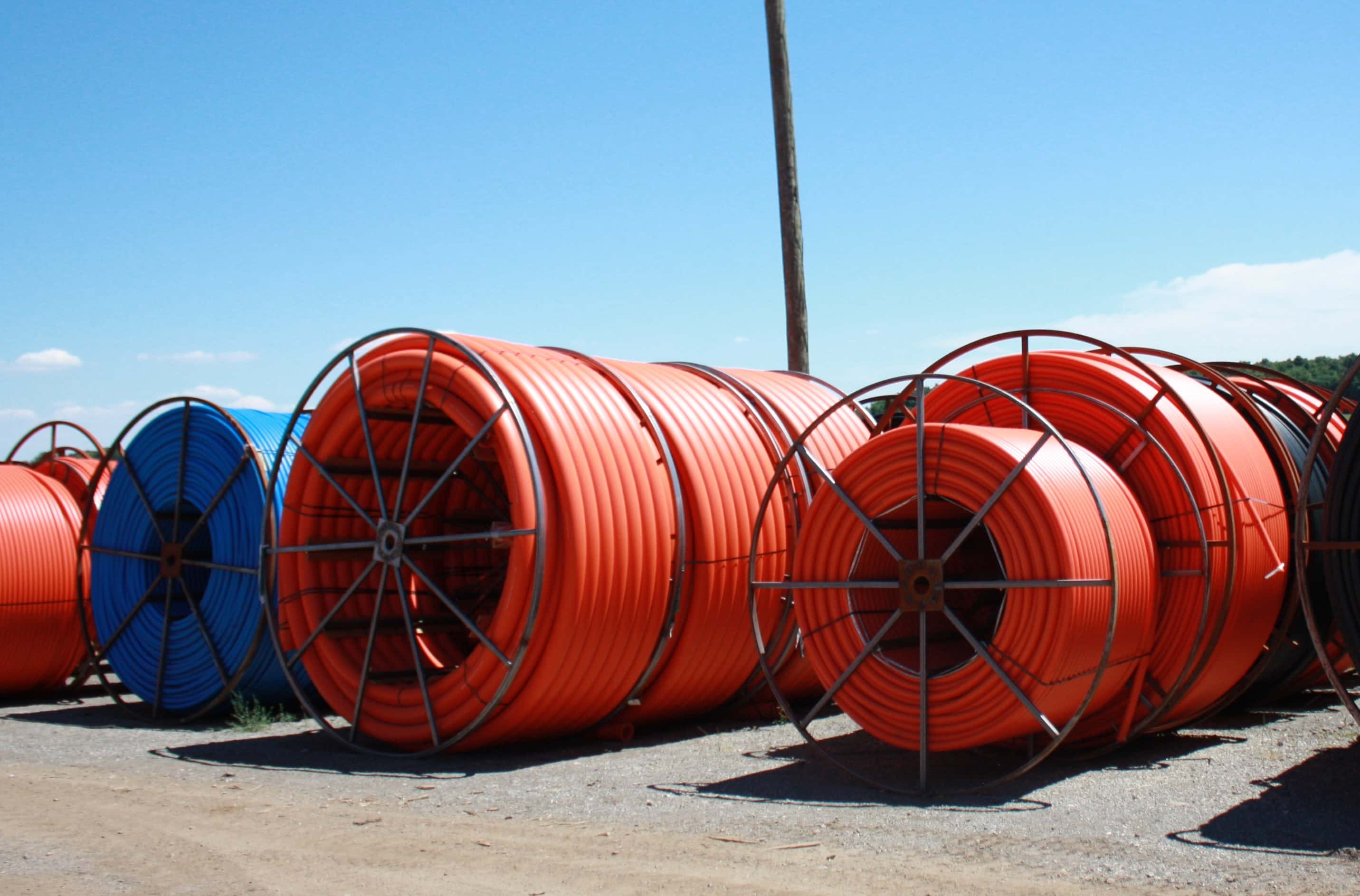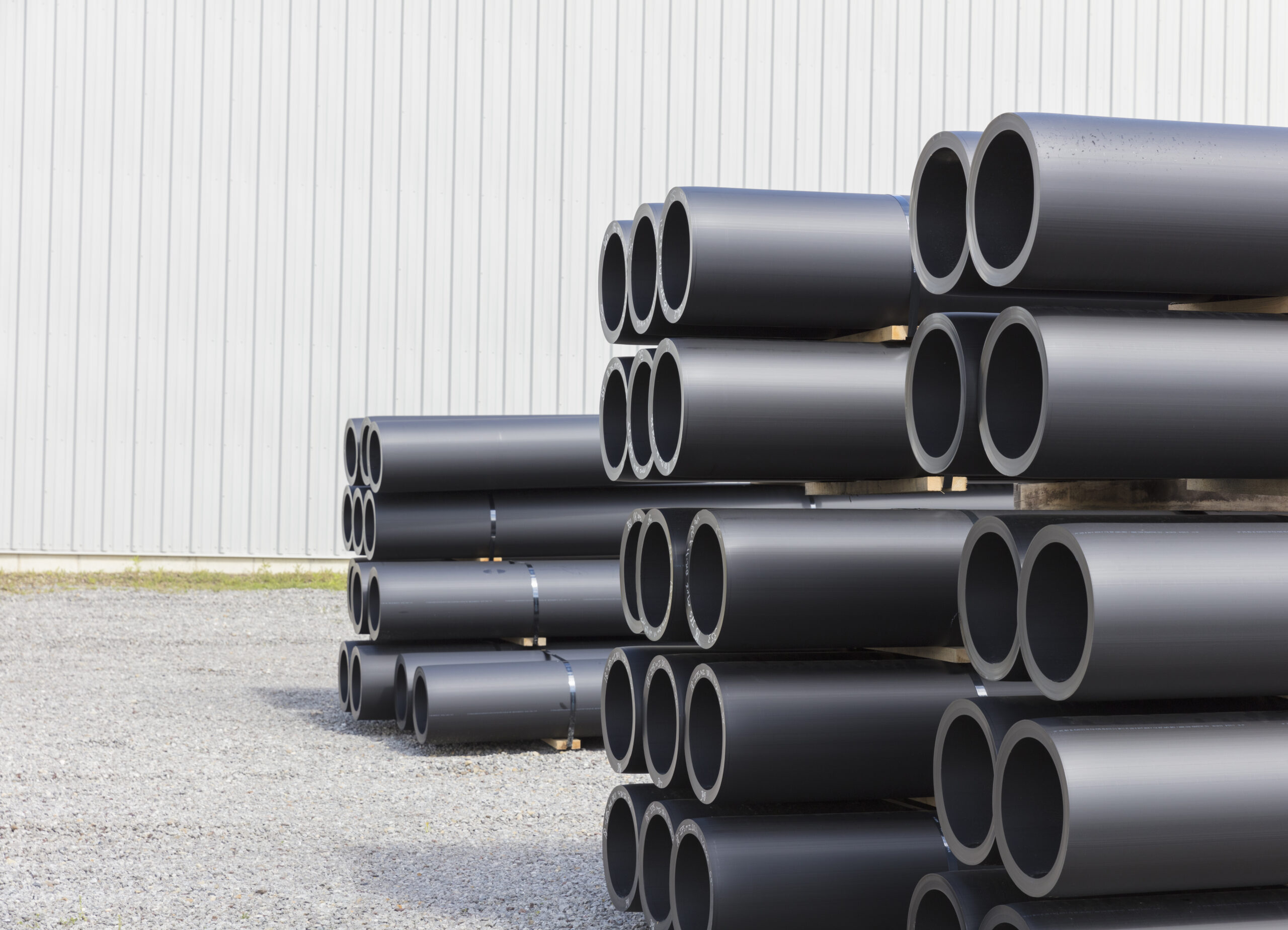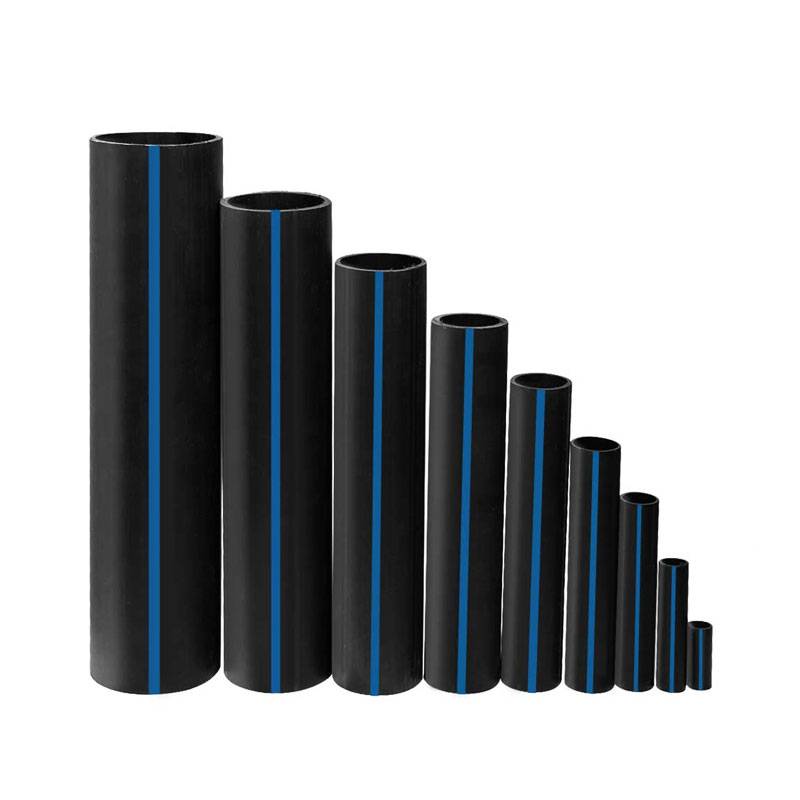FAQs About Texas hdpe pipe manufacturer and Their Products
Wiki Article
Discover the Manufacturing Process Behind High-Quality HDPE Pipe and Its Applications
The manufacturing process of high-grade HDPE pipes is elaborate and systematic. It starts with the selection of basic materials that enhance performance. Following this, ethylene goes through polymerization to develop material, which is after that formed via extrusion. Quality assurance is critical, guaranteeing that the last item satisfies strict standards. However, the trip of HDPE pipes doesn't finish with production. Their applications throughout numerous markets disclose a wider relevance worth taking a look at.Understanding HDPE: Properties and Advantages

High-density polyethylene (HDPE) is a functional thermoplastic recognized for its longevity and resistance to numerous environmental aspects. This product exhibits excellent tensile stamina, making it ideal for demanding applications. Its low-density framework adds to a light-weight item, helping with convenience of dealing with and installation. HDPE likewise showcases amazing resistance to chemicals, which minimizes degradation when subjected to extreme substances.
The material's low dampness absorption further improves its durability, making it suitable for usage in pipelines and storage tanks. Additionally, HDPE is resistant to ultraviolet (UV) radiation, making certain that products preserve their integrity even when exposed to sunshine. Moreover, its flexibility enables the development of complex forms without jeopardizing toughness. The environmentally friendly nature of HDPE, usually originated from recycled products, includes in its allure, advertising sustainable methods in production. Overall, these residential or commercial properties and benefits make HDPE a recommended option for various industrial and customer applications.
Raw Product Option for HDPE Production
The selection of basic materials for HDPE manufacturing is vital to verify the final product fulfills the desired requirements and high quality requirements. High-density polyethylene (HDPE) is mainly produced from polymerized ethylene, originated from fossil fuels such as gas or petroleum. The top quality of these feedstocks greatly affects the mechanical and thermal properties of the final HDPE.Ingredients likewise play a significant function in enhancing HDPE's efficiency, including anti-oxidants, UV stabilizers, and colorants, which enhance durability and resistance to ecological factors. The selection procedure must think about not only the chemical make-up of the raw materials yet also their handling features to assure effective production.
Furthermore, the sourcing of resources must prioritize sustainability and conformity with ecological guidelines, as liable practices are important in today's market. Ultimately, cautious raw material selection lays the structure for creating premium HDPE pipelines suitable for varied applications.
The Extrusion Process: Forming HDPE Pipe
The extrusion procedure plays an essential function in shaping HDPE pipes, starting with thorough material prep work techniques that ensure ideal circulation and consistency. Equally crucial is the style of the die, which directly influences the last dimensions and surface quality of the pipe. Together, these variables contribute considerably to the performance and high quality of HDPE pipe manufacturing.Material Preparation Techniques
Reliable production of HDPE pipelines begins with precise product preparation techniques, specifically the extrusion process. Throughout this stage, high-density polyethylene material is very first dried to remove moisture, ensuring suitable circulation qualities. The material is then fed right into the extruder, where it undertakes heating and melting, changing into a viscous state. This heating procedure is thoroughly regulated to maintain the product's integrity and performance. The molten HDPE is required via a die, forming it into a continuous pipeline kind. Correct temperature level monitoring during extrusion is necessary, as it directly affects the material's properties and the final product quality. As soon as formed, the HDPE pipe is cooled and reduced to defined lengths, ready for subsequent handling and applications.Die Layout Value
Precision in die layout plays an essential function in the extrusion process of HDPE pipes. The die works as the final shaping tool, straight affecting the pipe's dimensions, wall thickness, and surface coating. A properly designed die assurances consistent product flow, lowering problems such as irregularities and vulnerable points. The geometry of the die have to be optimized to fit the certain homes of HDPE, including its thickness and thermal actions during extrusion. Additionally, the cooling rate of the product as it travels through the die can considerably influence the pipeline's structural stability. Investing in innovative die innovation is essential for suppliers intending to generate top quality HDPE pipes that satisfy market requirements and consumer assumptions.High Quality Control Steps in HDPE Manufacturing
Various elements influence the top quality of HDPE pipe production, reliable high quality control measures are vital to assure uniformity and dependability in the last item (Pipe Manufacturing Midland TX). Key quality assurance techniques consist of strenuous material examination, verifying that the raw polyethylene fulfills established standards for purity and thickness. During the extrusion procedure, parameters such as temperature level, pressure, and cooling time are closely checked to maintain dimensional accuracy and architectural honestyOn top of that, post-production testing is necessary; producers often conduct hydrostatic tests to evaluate the pipe's stamina and resistance to pressure. Visual examinations for surface defects even more improve top quality guarantee. Accreditation from pertinent criteria organizations, like ASTM or ISO, supplies an additional layer of credibility. By executing these thorough top quality control procedures, suppliers can decrease defects, boost efficiency, and guarantee that the HDPE pipes fulfill the particular requirements of numerous applications, inevitably causing consumer contentment and count on the item.
Applications of HDPE Pipeline Throughout Industries
HDPE pipes are made use of throughout various industries as a result of about his their resilience and versatility. In water circulation systems, they guarantee efficient delivery, while in wastewater management, they supply trusted remedies for waste transport. Furthermore, agricultural watering networks take advantage of HDPE's resistance to rust and versatility, making it an ideal choice for modern-day farming methods.
Water Distribution Systems
A substantial variety of sectors count on high-density polyethylene (HDPE) pipes for efficient water circulation systems. Known for their toughness and resistance to deterioration, HDPE pipes are commonly used in community supply of water networks, farming irrigation, and industrial applications. Their light-weight nature helps with easy handling and installation, lowering labor prices and time. In addition, HDPE pipes that site can suit different pressure degrees, making them appropriate for both reduced and high-pressure systems. Pipe Supplier American Plastics Midland. The adaptability of the material permits smooth integration right into existing infrastructure, minimizing the need for substantial excavation. Additionally, HDPE's resistance to chemical leaching warranties that the water provided continues to be safe and clean, making it an excellent selection for preserving the high quality of safe and clean water across different fieldsWastewater Administration Solutions
Effective water circulation systems also lead the way for ingenious wastewater administration solutions, where high-density polyethylene (HDPE) pipelines play a considerable over at this website role. Popular for their sturdiness and resistance to deterioration, HDPE pipes are excellent for carrying wastewater in various settings. Their flexibility enables very easy installment in complicated atmospheres, reducing the need for considerable excavation. Additionally, HDPE's smooth indoor surface minimizes friction, improving circulation rates and effectiveness. These pipelines are additionally resistant to chemical leaching, making sure that contaminants do not jeopardize the surrounding environment. Industries, communities, and therapy facilities significantly count on HDPE pipes for their dependability and durability, making them a recommended selection for modern wastewater management systems. This adaptability underscores the essential value of HDPE pipelines throughout many applications.Agricultural Watering Networks
Agricultural irrigation networks benefit considerably from the usage of high-density polyethylene (HDPE) pipelines, which supply reliable and reliable water delivery to crops. HDPE pipelines are light-weight, making them easy to transfer and mount, while their adaptability permits for various configurations in diverse surfaces. These pipelines show outstanding resistance to rust, chemicals, and UV radiation, guaranteeing toughness in rough agricultural environments. In addition, their smooth indoor surface lessens friction loss, optimizing water circulation and reducing energy costs related to pumping. The durability of HDPE pipes, frequently going beyond 50 years, adds to reduce maintenance and substitute expenditures. Farmers increasingly rely on HDPE pipelines to improve watering effectiveness and advertise sustainable farming practices, inevitably leading to enhanced crop returns and resource preservation.
Future Fads in HDPE Pipeline Technology
As the demand for lasting and efficient framework grows, developments in HDPE pipe innovation are positioned to transform various sectors. Arising trends consist of the assimilation of smart technologies, such as sensors and IoT abilities, which assist in real-time monitoring of pipeline problems, lowering upkeep expenses and avoiding leakages. Furthermore, the advancement of advanced production strategies, such as 3D printing, is enabling the production of facility, personalized pipeline designs that deal with details project requirements.The focus on recycling and round economic climate practices is driving the technology of HDPE pipes made from recycled materials, enhancing sustainability. Improved jointing techniques, such as electro-fusion and mechanical installations, are also improving setup efficiency and integrity. The growing emphasis on environmental laws is pressing makers to take on greener production processes, making certain that HDPE pipelines not just satisfy market standards but likewise foster a more lasting future for infrastructure development.
Frequently Asked Questions
Just How Does HDPE Compare to Various Other Plastic Materials?
HDPE outshines numerous various other plastic products regarding resilience, chemical resistance, and flexibility. Its low thickness and high tensile stamina make it ideal for numerous applications, typically exceeding options in both efficiency and durability.What Are the Ecological Impacts of HDPE Manufacturing?
The ecological effects of HDPE production include greenhouse gas discharges, energy consumption, and possible pollution from manufacturing processes. In addition, inappropriate disposal can cause dirt and water contamination, elevating worries regarding long-term environmental effects.Can HDPE Piping Be Reused?
Yes, HDPE pipes can be recycled. Lots of facilities accept utilized HDPE for handling, transforming it into new products. This reusing contributes to sustainability efforts, lowering plastic waste while preserving sources and power in the production cycle.What Is the Lifespan of HDPE Pipes?

Exactly How Do Temperature Level Variants Impact HDPE Pipe Efficiency?
Temperature level variations substantially influence HDPE pipe efficiency, impacting versatility and stamina. High temperature levels can result in softening, while reduced temperature levels might cause brittleness, eventually influencing the pipeline's longevity and viability for different applications in varied atmospheres.Report this wiki page